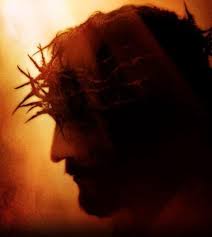The Year of the LORD’s Favor,
and the Day of Vengeance of Our God
61: 1-11
Two starkly contrasting realities are seen in these verses: the year of the Lord’s favor and the day of vengeance of our Lord, and both arise from the truth on which the previous chapter ended. Things will not go on as they are forever. One day God will bring them to a sudden end. The intervening period, however long or short, is a time of opportunity but should not be taken lightly for terrible judgment awaits those who carelessly let it pass by.243

This is the last of the Servant passages. The prophet Isaiah, under the inspiration of the Ruach Ha’Kodesh (Second Peter 1:21), impersonated the Messiah in the first three verses. This is evidenced by his use of the personal pronouns I and me within a prediction that describes things no human could accomplish. As we will see, Jesus fulfilled all of the predicted events in His First Coming and will fulfill the rest in His Second Coming. We need to keep in mind that the First Coming of Messiah did not fulfill the entirety of God’s wonderful plan. Instead, it accomplished the work of providing salvation to mankind through Yeshua’s death and resurrection. The Second Coming will finish God’s plan, which is to bring His people into His Kingdom and populate His eternal heaven.
During Jesus’ First Coming, the Spirit of God was to come upon Jesus after His baptism by John. Afterward, the Lord would preach, heal, and proclaim freedom (Hebrew: deror) for the captives (61:1). Messiah is still considered the greatest teacher and preacher who ever lived, and He is the greatest healer in the history of the world. His works were a testimony that He had been sent by God (John 5:36). Just before His ascension to heaven, He descended into sh’ol to set the captives free (Ephesians 4:9-10).
The phrase to proclaim the year of the Lord’s favor refers to the fulfillment of Jesus’ prophecy in Matthew 16:18-19 to build His church, which would be victorious over the gates of Hades. The church age began on the festival of Shavu’ot (see the commentary on Acts, to see link click Al – The Ruach Ha’Kodesh Comes at Shavu’ot) and will extend until the Rapture of the Church from the earth (see the commentary on Revelation By – The Rapture of the Church).
Proclaiming freedom for the captives (61:1) refers to the righteous of the TaNaKh delivered from sh’ol, for the blood of animals had only covered their sins. They were not yet “cleansed” and thus eligible for heaven until Messiah finished the work of salvation by the sacrifice of Himself on the cross. From the time of the cross onward, spiritual captives in bondage to sin have been delivered by repenting of their sins and receiving Him, by faith, as their personal Lord and Savior. Thus they are eligible for heaven at death. In the first three verses of Chapter 61 Isaiah shows us the outline of Messiah’s ministry.
It is not unusual for Isaiah to alternate between different time periods. Normally he alternates between near historical and far eschatological prophecies. But here, Isaiah alternates between two far eschatological prophecies and a prophecy about the Suffering Servant. The way you can distinguish between the two is the context.
A far eschatological prophecy of the end of the Great Tribulation, the Second Coming and the Messianic Kingdom (58:1 to 60:1-22).
A summary of the Suffering Servant’s First Coming, Second Coming and the restoration of Israel (61:1-11, also see Jj), and the Coming of the Messiah and His Kingdom (61:1-11).
Far Eschatological Prophecy (62:1 to 66:24)



Leave A Comment